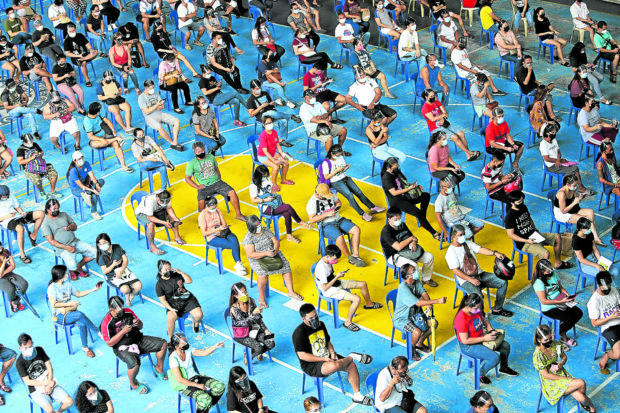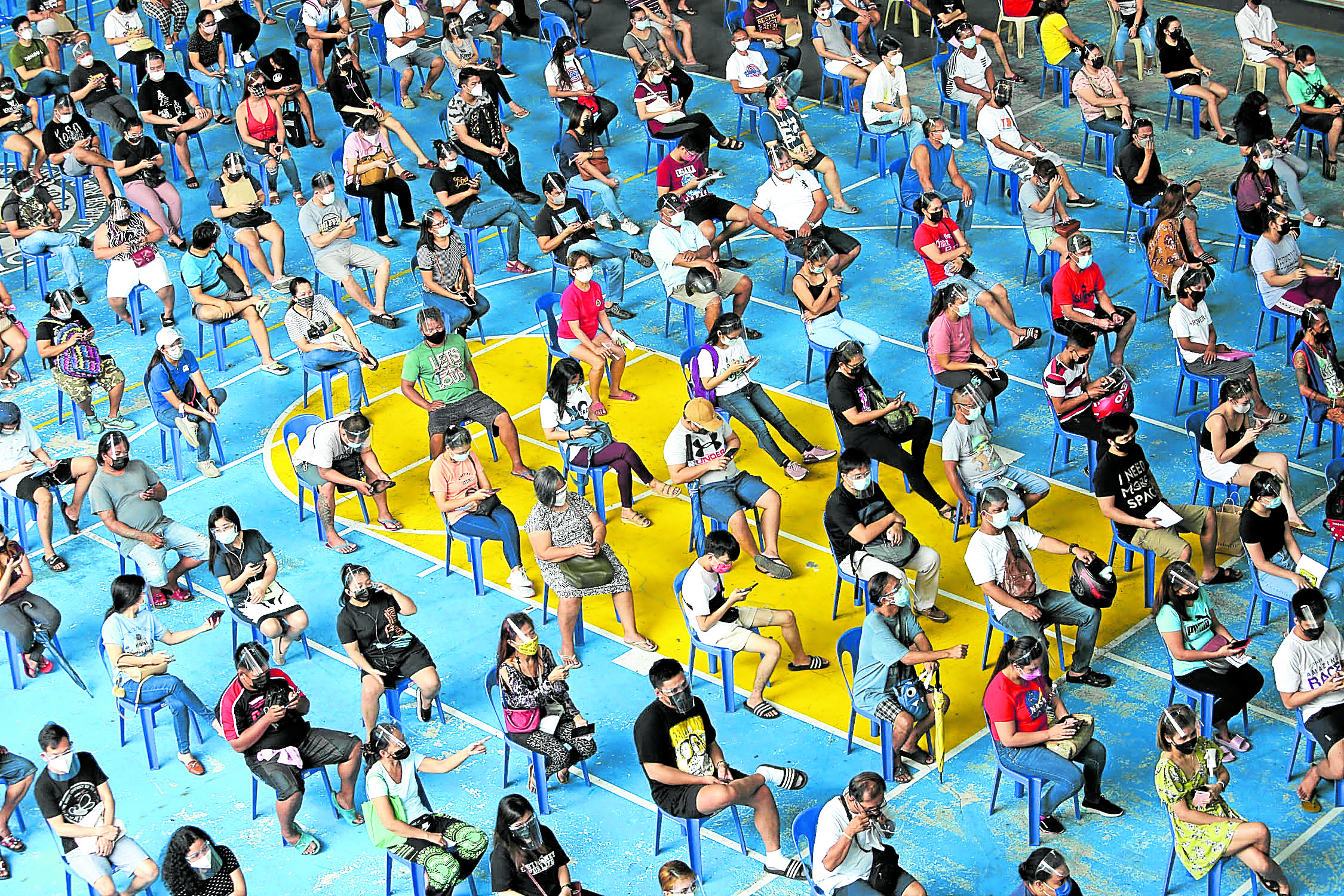
It’s fair to assume that, as you read this, the Delta variant is now the dominant variant in the country. The forecast we made in May seems to be on point, despite our health officials’ and experts’ optimistic outlook then and up to last month that there was no evidence of community transmission of this highly transmissible variant.
By end of August, at least 80 percent of cases will be Delta, and by mid-September, 95 to almost 100 percent of cases will be Delta. The threshold point for Delta transmission has been attained while we slept a few months ago, and once a threshold point for transmission is reached, it’s like a dam that breaks, and all hell breaks loose.
No lockdown, no matter how stringent, will stop Delta. We warned that the two-week lockdown will only temper a sudden spike of cases, but the downside is that it will extend the duration of the outbreak by another month or two.
Respite and surge
If we do nothing different from the vaccine-centric strategy plus lockdown we’re currently pursuing, we expect the number of new cases to be upward of 12,000, up to 30,000 a day until late September. This will be characterized by some regions recovering, as Delta ravages new regions.
We may have a respite in the last quarter of the year, to be followed by another big surge, by another variant—possibly the Lambda—by first quarter of next year. As forecast, we’ll have recurrent cycles of health- and economy-ravaging surges, and periods of stability. We hope our health officials are convinced by now that banking mainly on mass vaccination to attain herd immunity is an illusion—a mirage in the desert. We need to modify the strategy.
These breathing spells will get shorter and shorter, and the surges will become more and more frequent. This will be so until we patch up the chink in our armor, that is, preventive and early home treatment.
We presented the forecast of a Delta surge and the basis for it to two high-ranking officials in early June with some recommendations to mitigate it. Since then, we were convinced there was no way we could prevent this variant from breaching our shores, but there were some doable, economical and cost-effective preparations—centering on chemoprophylaxis, early treatment, community response strengthening and mental toughness—that we could do to mitigate its effects, and prevent hospitalization and excess deaths. We were confident that Delta could just come and go like an ordinary seasonal flu outbreak, if we were amply prepared.
Better late than never
It’s late, but better late than never. Our pandemic managers may wish to reread our proposals in our previous columns since March of this year, if they feel this pandemic is pushing them to a corner, and they’re running out of ideas on how to get our nation out of it. We remain confident that the window is still open just wide enough to squeeze ourselves through, and this could be remarkably felt in three months, with full effect in six months.
If we institute some policy changes before we hear Jose Mari Chan sing his Christmas carols—which usually starts by September—then we just might be able to enjoy our Christmas this year.
Last week, we offered 12 important things to do promptly to stop Delta dead in its tracks. We don’t have to wait for any change in government policy to implement the treatment guidance, like a do-it-yourself survival guide. We believe that around 50 percent of the population could afford to implement the preventive and early treatment guidance.
Protect others
We received much encouraging feedback for the guidance since we started circulating it. And our request is that if you benefited from it, or strongly believe that it could help stem the tide of COVID-19 in our country, please sponsor one or two indigent families, so they may also be protected.
A few nonprofit foundations, such as For God’s Glory Foundation (tel. 88920723) and Concerned Doctors and Citizens of the Philippines have pledged to help in increasing access of the poor to this preventive and early treatment guidance. You may also wish to help these foundations.
When you help in getting others protected, especially those who can never pay you back for the things you do for them, that act of kindness by itself boosts your immune system and reduces your risk of getting infected. Don’t ask us for any randomized clinical trials to support that; just trust that God will reward you for your kindness and He will.
When you focus on helping others, instead of worrying 24/7 for your family’s safety, your fears and worries diminish, realizing how much better off you are in surviving this pandemic, compared to so many millions in our population.
We explained in previous columns that the Delta variant is so infectious that when one member of the household gets sick, in all probability, the entire household will get infected. We’re now treating several families where everyone, from the octogenarian grandparents up to the months-old great-grandchildren, are confirmed positive for COVID-19.
Our early treatment protocol strongly recommends that once one household member develops symptoms, he or she should be isolated immediately, and everyone else in the household should take prophylactic treatment. The delay in waiting for the nasopharyngeal swab and other laboratory results allows the virus to spread quickly in symptomatic as well as still asymptomatic household members.
Remember that Delta has a viral load that is more than 1,000 times the original variant, and is at least 60 percent more infectious than the already highly infectious Alpha or Beta variants. So, you can’t afford any delay in preventing it from replicating in your body.
Delta deceives many into thinking it’s just an ordinary cold or sore throat, since fever is usually not present in the first few days. Disabuse your minds of the notion that COVID-19 will make you lose your sense of smell or taste, develop diarrhea, or experience muscle pains and weakness. That model has been phased out. The virus has repackaged itself with a different clinical presentation.
Once you develop a cold, headache and sore throat at this time, there’s a 90-percent probability you have Delta. If you have additional symptoms of cough and fever, the probability increases to a near-hundred percent.
Do the following ASAP
- Isolate and start treatment for COVID-19 as recommended in our guidance.
- Prepare your contact-tracing list and report immediately to your barangay.
- Inform those you have been in contact with in the last five days so they could quarantine themselves.
- If your swab turns out negative, it’s likely to be false negative; it’s best to have your swab repeated.
- Also have additional blood tests done. These can guide your physician if you have a viral infection and if there are indicators of inflammation in your body.
- If you have these laboratory indicators, even if you have negative nasopharyngeal swabs, you have to continue isolation and treatment for COVID-19.
- We recommend a longer isolation for Delta COVID-19 of two weeks instead of the usual 10 days, since this variant takes a longer time to be fully shed. Remember, its viral load is over a thousand times more than the original variant.
- Read and reread, and understand well the 12 reminders we discussed last week, especially on how to accelerate your recovery with mindset resetting, visualization and prayers.
- Never let your guard down with Delta—physically and mentally. It’s beatable, so long as you don’t let it outsmart you.














































